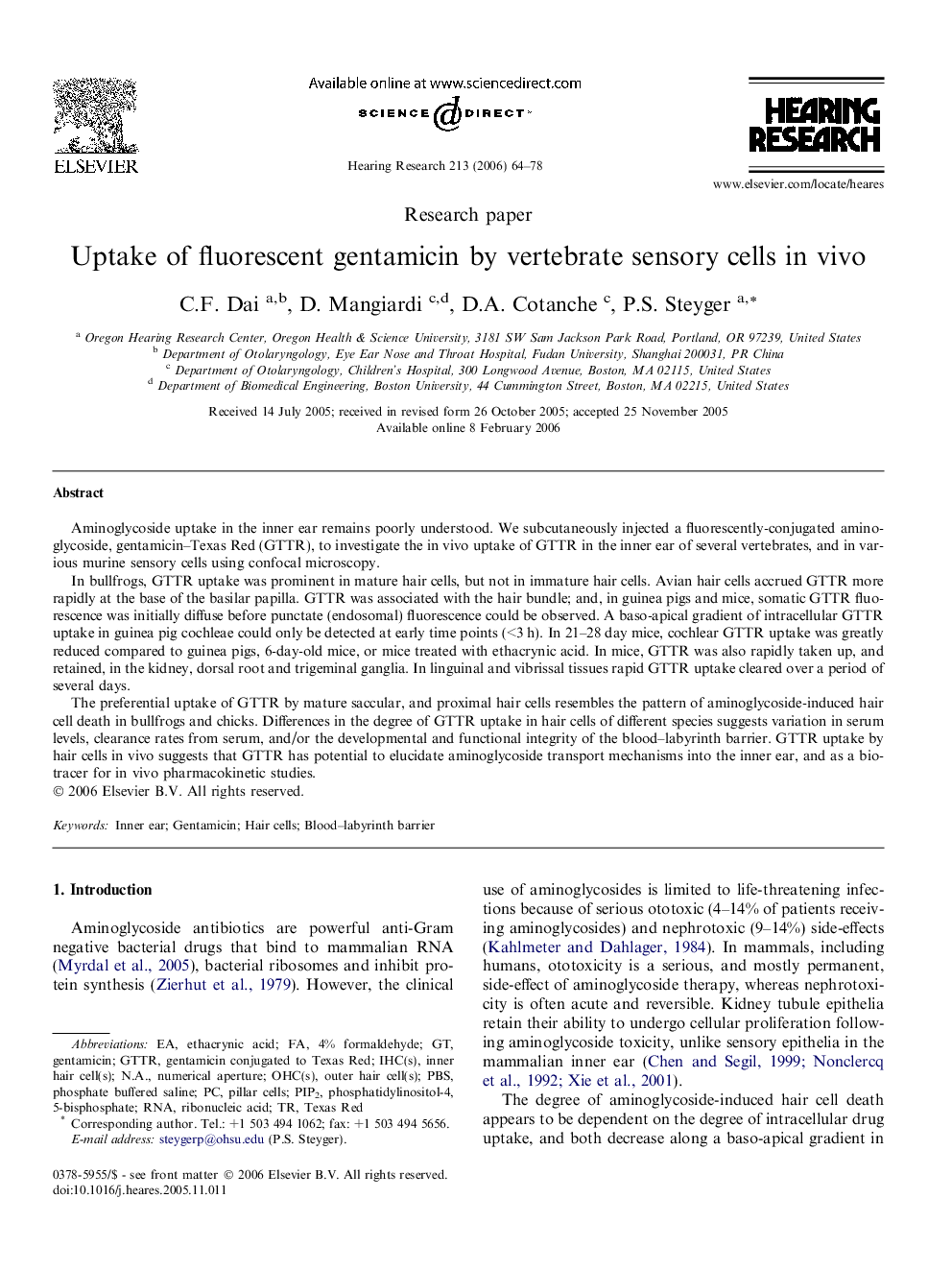| Article ID | Journal | Published Year | Pages | File Type |
|---|---|---|---|---|
| 4356539 | Hearing Research | 2006 | 15 Pages |
Aminoglycoside uptake in the inner ear remains poorly understood. We subcutaneously injected a fluorescently-conjugated aminoglycoside, gentamicin–Texas Red (GTTR), to investigate the in vivo uptake of GTTR in the inner ear of several vertebrates, and in various murine sensory cells using confocal microscopy.In bullfrogs, GTTR uptake was prominent in mature hair cells, but not in immature hair cells. Avian hair cells accrued GTTR more rapidly at the base of the basilar papilla. GTTR was associated with the hair bundle; and, in guinea pigs and mice, somatic GTTR fluorescence was initially diffuse before punctate (endosomal) fluorescence could be observed. A baso-apical gradient of intracellular GTTR uptake in guinea pig cochleae could only be detected at early time points (<3 h). In 21–28 day mice, cochlear GTTR uptake was greatly reduced compared to guinea pigs, 6-day-old mice, or mice treated with ethacrynic acid. In mice, GTTR was also rapidly taken up, and retained, in the kidney, dorsal root and trigeminal ganglia. In linguinal and vibrissal tissues rapid GTTR uptake cleared over a period of several days.The preferential uptake of GTTR by mature saccular, and proximal hair cells resembles the pattern of aminoglycoside-induced hair cell death in bullfrogs and chicks. Differences in the degree of GTTR uptake in hair cells of different species suggests variation in serum levels, clearance rates from serum, and/or the developmental and functional integrity of the blood–labyrinth barrier. GTTR uptake by hair cells in vivo suggests that GTTR has potential to elucidate aminoglycoside transport mechanisms into the inner ear, and as a bio-tracer for in vivo pharmacokinetic studies.
